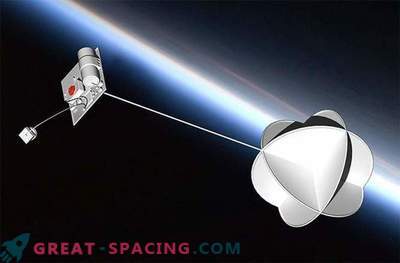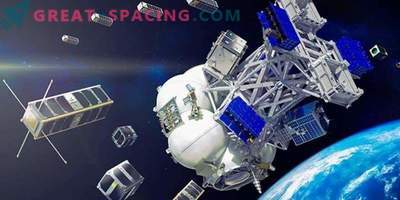
Hundreds of millions of dollars can invest in satellites the size of a small bus that will be sent into orbit above the Earth. They will provide various services, including Internet access, broadcasting and military surveillance.
However, if some part fails or runs out of fuel, then there is no way to repair it. Now scientists are approaching the solution of the problem - a robot repairman. The idea is to extend the existence of satellites on the orbital path. The robot will travel between satellites, troubleshooting and replenishing fuel reserves.
In the spring of 2017, 30 companies gathered at the Goddard Space Flight Center to learn about new technology and review satellite equipment. One of the first such robots plan to send in 2018. But analysts say the market will need another 10 years to grow to supply.
Developers need to create a smart robot, which takes time. But the number of satellites in need of the service is increasing every year. In 2016, 1,400 active devices were in orbit, and in 2012, 994. Many of them have been able to update software for 10-15 years. NASA has begun to create the necessary technology. In February, the agency sent a Raven sensor capable of tracking vehicles approaching the ISS. Satellites in near-earth orbit are moving at speeds of 15,000-18,000 mph.
Previously, shuttles were used for maintenance. With their help, we were able to repair the telescope 5 times, and in 2009 we replaced the printed circuit boards for the last time and installed new data. But the shuttles are out of use. Now technicians are trying to create a fully robotized machine that can autonomously perform tasks.
Autonomy is important because it takes time to send a signal from the Earth to the device. The delay can last 3 seconds, and in this work you have to rely on speed. But operations, like working with wires, will require the direct participation of operators from the Earth.
One of the technologies is being developed by the creators of the Orbital ATK Inc. rocket. They began to collect the Mission Service Vehicle-1 service device and plan to launch it in 2019. In June, SSL announced a new satellite-oriented strategy. They are going to build a spacecraft with the ability to refuel, and DARPA will provide software and robotic tools. The device will be sent in 2021. Some scientists doubt the need to launch assistant robots. There is an assumption that soon all massive and expensive satellites will be replaced with cheap tiny analogues. If you use the technology of reusable launch Ilona Mask together with small devices, then it is much cheaper than refilling or repairing old ones.
But repair advocates say we need high and low frequencies satellites. And cheaper options will cause even more need for repairs. Scientists also believe that robots will be needed when we collect ships on other planets and explore other worlds.











































